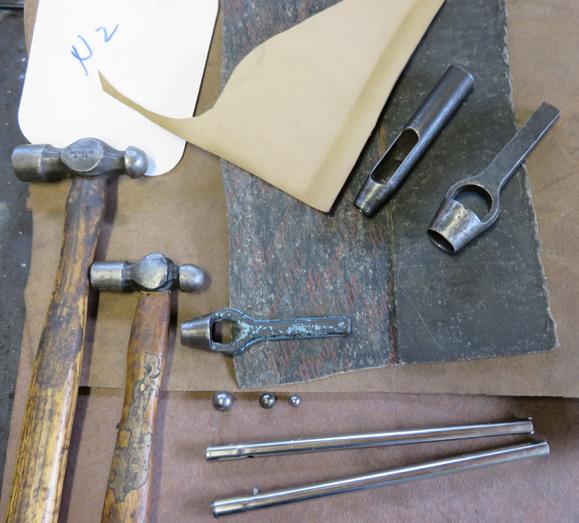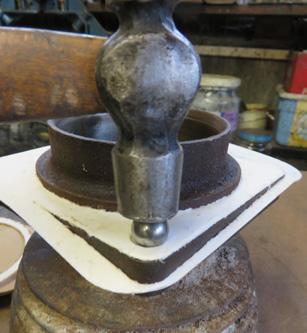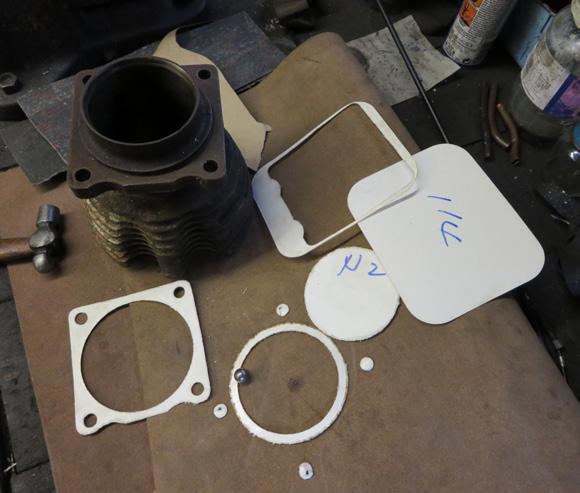
2 minute read
Making a 'Tasty' Gasket
By Dave Blanchard
I am sure we have all made gaskets in the past when the correct one wasn't available. Laying a sheet of gasket material on a surface and using a small hammer to tap or cut the edges in the shape required becomes easy and accurate with a little practice. But some of the modern day Corn flake packet cardboards are not what they used to be, and the NOS Corn Flake cardboard (if you can find them) were just as useless in hot oily conditions anyway.
Advertisement

So I did a little experiment with those rectangular waxy coated, cardboard tops you find on Chinese takeaway aluminium foil containers. I left one of these cardboard covers in an old saucepan half filled with a dirty mixture of white spirit, engine oil and ethanol impregnated petrol for the best part of a week (No, I am not a qualified Chemist!). The takeaway Chinese food 'cardboard cover' survived very well and seemed of better quality than the range of motorbikes they are currently making. The food cover wasn't effected in any obvious way by the obnoxious petroleum mixture it was forced to bathe in.
In an emergency when the correct gasket material is not available I can recommend this Chinese food cover to get you out of trouble. Only problem is, I haven't found one big enough yet to fit a primary chain case! Perhaps other readers know of a supply 'Sauce'?

Seriously though, sheet gasket paper, cork, or rubber has to withstand, either water, oil, petrol and often extreme heat at the same time. Therefore gasket paper comes in dozens of different types of materiel for all sorts of applications. Consult your local supplier for the application you require. Also there are many different thickness's available. Probably the thickest cork we might ever need on our old bikes could be an eighth of an inch, or 3 mm. Fuel tank cap washers spring to mind. Some original paper gaskets fitted to our ancient bikes could be as thin as 5 thousand of an inch....only slightly thicker than Chinese hair.

Always check that the gasket you are making will not affect the end float on a shaft. Too thin for the job and the end float reduces, then gears could bind. Too thick for the job and end float becomes excessive. Common sense and measuring equipment is needed here.
Another word of warning when making gaskets by tapping with a ballpein hammer...don't hit too hard! Especially on a thin cast iron flange for fear of cracking it. Again common sense and slow gentle tapping will bring success and reward. There is nothing like the feeling of a job well done .








